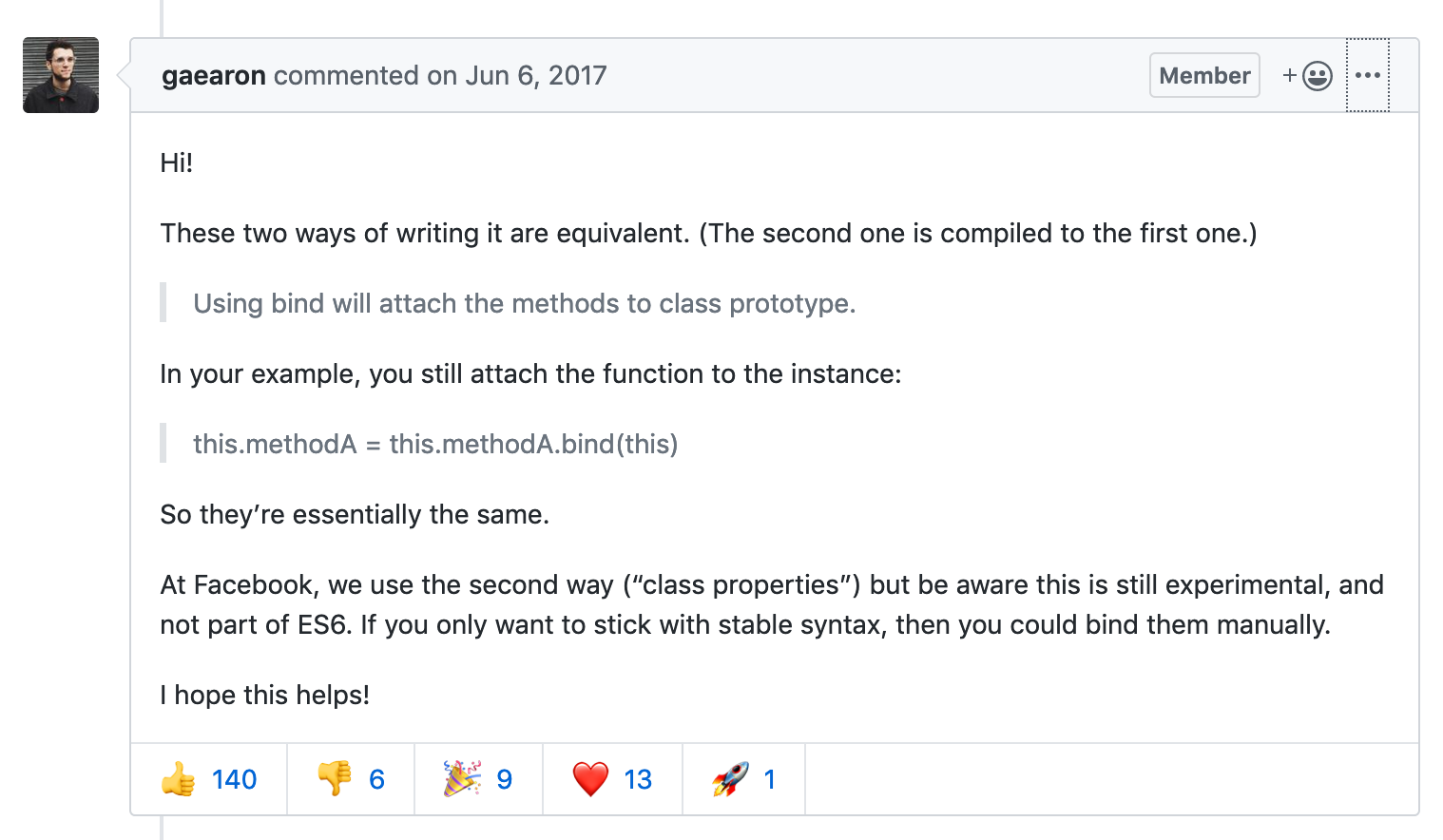Do I still need to bind React functions in 2019?

One of Reddit members asked me a question in follow-up to my answer to a question about this keyword:
Why do I need to bind a function if it’s in a class?
Short answer
You don’t need to use bind. If you use the following syntax to declare class methods, then this in them will be automatically bound to the current class instance. It’s magic.

class MyComponent extends React.Component {
myMethod1 = () => {
...
}
myMethod2 = () => {
...
}
}
Note the absence of const keyword.
That syntax was introduced in ES6 class field declarations proposal and already widely supported. That is what you should do when you write React class-based components in 2019. bind is obsolete.
Long answer
When JavaScript was created, it wasn’t an object-oriented language. It was a quirky object-oriented-wannabe, which in many cases behaved like one but not quite. One of those quirks was its this keyword.
Object-oriented languages like Java and C++ have this keyword too. In those languages, it always points to the current instance of an object type (aka class).
JavaScript wasn’t like that. In it, this could be pointing to the current class instance (as you would expect), but also to the browser window object, to the current function, and it could be just null. There were rules behind that behaviour, but they were so complex nobody could understand them. If you curious, check out any of these articles:
- Binding functions in React
- React — to Bind or Not to Bind
- This is why we need to bind event handlers in Class Components in React
Why was that important? Let’s look at an example.
class MyComponent extends React.Component {
state = {
text: "abc"
};
setText {
this.setState({ text: "123" }); // What is "this" here???
}
render() {
return (
<div>
<div>{this.state.text}</div>
<button onClick={this.setText}>Click me</button>
</div>
);
}
}
The code above doesn’t work.
This is what was supposed to happen here:
- We click on “Click me” button, and
setTextmethod is executed because it is bound to the button’sonClickhandler. setTextmethod sets the component’s statetextvalue to “123” by calling React’ssetStatemethod.
However, what we really get here is an obscure “A cross-origin error was thrown” error when we click the button.
Why?
Because in order for this.setState to work, this inside setText method must be pointing to the current instance of MyComponent class. But it doesn’t. It is pointing to something else entirely. Yes, it is possible to decipher the complex rules governing the value of this in that case and tell why. But I wouldn’t bother. It’s just too hard.
However, it is much easier to avoid that problem entirely.
There are 3 ways to solve it:
- Explicitly bind the value of
thisinsidesetTextto the current class instance. That can be done in a constructor:
class MyComponent extends React.Component {
...
constructor(props) {
super(props);
this.setText = this.setText.bind(this);
}
...
}
- Use an arrow function in an event handler. This magically makes
thisin the function it calls bound to the current class instance too:
<button onClick={() => this.setText()}>Click me</button>
- You already know it. Use class field syntax for method declaration:
class MyComponent extends React.Component {
...
setText = () => {
this.setState({ text: "123" });
}
...
}
As of 2019, this method is considered superior. Facebook has been using it internally since 2017:

Or, even better, drop class-based components altogether and switch to functional components with hooks.
Happy coding!